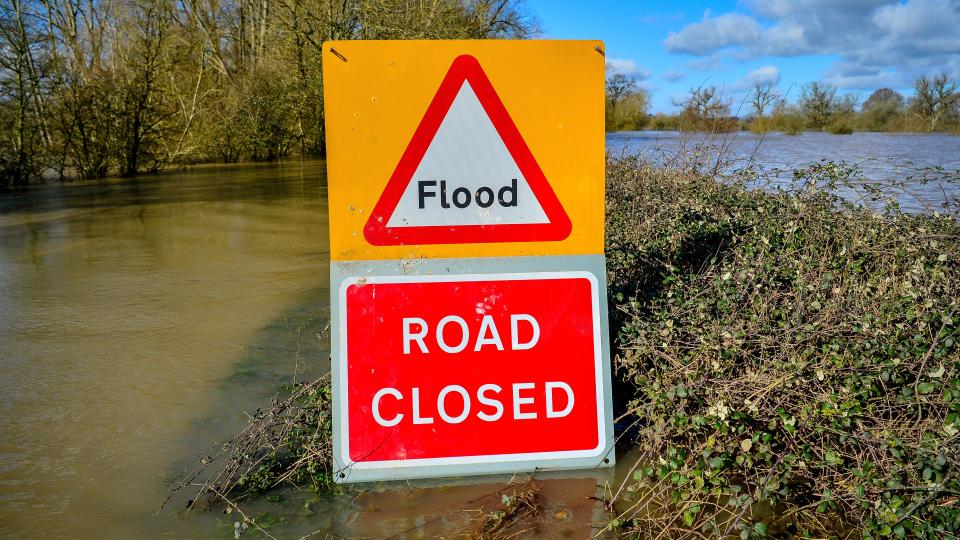Summer flood claims becoming more commonplace, says major insurer

More than a third (35%) of home insurance flood claims happen between June and August, according to new analysis from a major insurer.
Aviva examined home and commercial policy flood claims from 2013 to 2024.
It found that July and August each accounted for 12% of all property flood claims received, putting the months joint second behind December, which accounted for 17%.
The data also pointed to an increased likelihood of floods occurring outside of traditional “flood season” in the colder months of the year.
While 2013, 2014 and 2015 saw some flooding in the summer, most claims took place during the winter months, Aviva said.
But in five out of the past 10 years, (2016, 2018, 2020, 2021 and 2022), Aviva received the bulk of flood claims during the summer – with significant spikes happening in August 2020 and July 2021.
Although winter floods tend to be caused by rivers bursting their banks after prolonged periods of rain where the ground is already saturated, summer flooding is often caused by heavy, intense and slow-moving downpours falling onto dry ground following hot, dry weather, the insurer said.
It also said the data indicates that in winter, floods are more common in northern England and the South West, which also typically experience river flooding.
However, the summer months tend to see a peak in flash flood claims around London, the South East and eastern England.
Jason Storah, CEO UK & Ireland general insurance at Aviva, said: “Traditionally, we think of floods happening in the autumn and winter, when rainfall occurs over a period of time and rivers reach capacity. However, this analysis shows that floods can and do occur at any time and summer flash floods are becoming more commonplace.
“This pattern of flood claims suggests that residents and businesses should be prepared for floods at any point during the year and put in place a flood action plan.”
He said that while residents and business owners may be more aware of the risks to their properties if they are close to a body of water, flash floods can be unexpected, particularly following hot, dry days.
Mr Storah said: “Flash floods can catch us off guard as they are sudden and harder to predict, so we’d urge people to get ready and take action to protect their homes or businesses.
“This can mean simple things like moving sentimental items to higher levels or installing flood gates at their properties. As urban areas can be particularly susceptible to flash floods, we’d also encourage people to consider their outside spaces, ideally including permeable materials such as lawn, plants or softer landscaping materials like gravel to help water to drain.”
More than a quarter (27%) of UK homeowners have already or plan to replace part or all of their garden with a driveway made from non-permeable material, according to a Censuswide survey on behalf of Aviva last August.
The insurer cautioned that impermeable surfaces and a lack of soil and natural planting make it more difficult for water to soak away, which can overwhelm drains and cause flooding.
Mr Storah added: “Sadly, changing weather patterns and extreme weather such as flash flooding in the summer are things we are likely to experience more often, so it’s important that our properties are climate-ready, regardless of where we live or work.”
Aviva has some tips to help households and businesses make their outside spaces more flood resilient:
1. Choose more permeable materials such as gravel or block paving. Using permeable materials that allow rainwater to soak through to the soil below – can help reduce the risk from surface water flooding.
2. Check if you need planning permission if you to intend to change an area using non-permeable material.
3. Pay attention to the drains around your property regularly and ensure they are free of leaves, gravel or mud. Report any blocked public road drains or culverts to your local authority.
4. Consider making tweaks. Having a border around a driveway or installing a drain will help rainwater to run off during heavy downpours, reducing the flow of water into street drains, and may help stop water from entering your property. Or consider using more permeable materials in part of your outside space to help with drainage.
5. Consider installing a water butt or other rainwater collection device to prevent water from overwhelming drains. Plants and wildlife prefer rainwater to tap water too and during droughts, rainwater collection devices can help to save water.
6. Check your property’s flood risk. Even if your home is nowhere near a river or the sea, it could still be at risk from flooding.

 Yahoo Finance
Yahoo Finance 